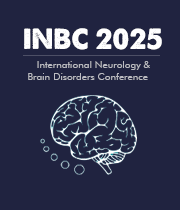Title : Association of blood-based transcriptional risk scores with diffusion tensor imaging biomarkers for Alzheimer’s disease in a Korean cohort
Abstract:
Alzheimer’s disease (AD) is a complex neurodegenerative disorder influenced by genetics and gene expression. However, the functional effect of these genetic variants remains largely unclear. Many of these variants, known as single nucleotide polymorphisms (SNPs), are believed to act as quantitative trait loci (eQTLs), influencing the expression of nearby genes which may potentially contribute to disease development. Transcriptional Risk Scores (TRS) summarize an individual’s gene expression profile based on genes associated with Alzheimer’s disease (AD) risk. TRS’s use in AD, especially in combination with Diffusion Tensor imaging (DTI) measures and within non-European populations, including Asian cohorts, has not been well explored. DTI can detect subtle changes in white matter not visible with conventional MRI and can offer a way to detect early white matter damage to Alzheimer’s disease. Integrating TRS with DTI measures may provide new insights into disease mechanisms and serve as a potential blood-based biomarker for identifying individuals at higher risk of neurodegeneration.
Objective: To examine how transcriptional risk scores (TRS) relate to white matter integrity measured by DTI in a Korean cohort.
Methods: We analyzed RNA-seq data from 506 participants in the Korean Brain Aging Study (KBASE) to calculate TRS for AD. AD-associated SNPs (p < 1×10??) were identified from a trans-ancestry genome-wide association study (GWAS) and mapped to nearby genes overlapping with blood cis-expression quantitative trait loci (cis-eQTLs). High-confidence target genes were selected using Summary-data-based Mendelian Randomization (SMR; pSMR < 0.05, pHEIDI > 0.01) and COLOC (colocalization analysis; posterior probability of shared causal variant, PPH4 > 0.8). RNA-seq data were normalized using conditional quantile normalization (CQN), correcting for RNA Integrity Number (RIN) and batch effects. TRS were calculated by aggregating the normalized expression levels of target genes. Associations between TRS and diffusion tensor imaging measures (DTI; FA, MD, AD, RD), were assessed using linear regression models adjusted for covariates including age, sex, and APOE ε4 status.
Expected Results: We hypothesize that TRS values will be significantly associated with altered DTI measures indicative of white matter degeneration (e.g., lower FA, higher MD/RD)
Significance: This study provides a framework for integrating genetics, transcriptomics, and imaging in Asian populations, an understudied group in AD research. The findings may help us understand underlying disease mechanisms and serve as a potential blood-based biomarker for the early detection of Alzheimer’s disease.



